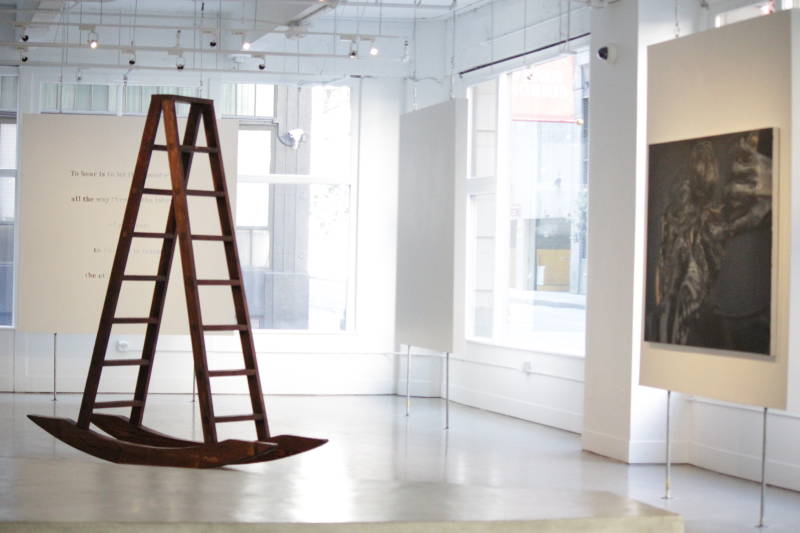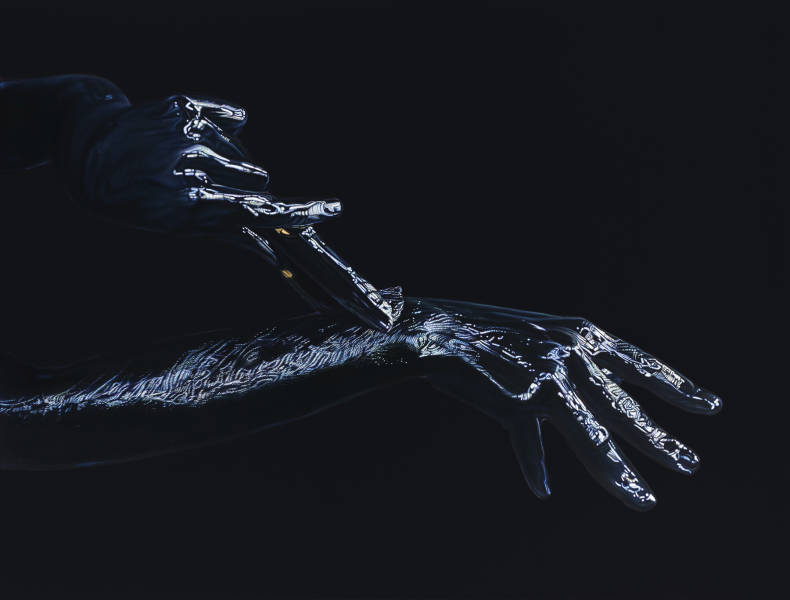Called a “Mexican terrorist” after a recent show in Arizona, Ana Teresa Fernández’s work is powerful in its command of artistic practice as well as the themes she chooses to tackle.
Born in Mexico, Fernández comes from a long line of political activists, “I think it is in my DNA,” she says. Her mother worked as a documentary photographer along the border and her grandfather was incarcerated for taking a political stance. “They influenced the way that I look at the world,” she says.
She was recruited to attend the San Francisco Art Institute, where people told her: “You are such a weird creature, how can you not think about going to art school?” Fernández moved to San Francisco a week before 9/11 and found a place she belonged.

Fernández remembers walking down the hall on her first visit and feeling mesmerized. “The energy of people being allowed to be themselves,” she says, “that was what really got me so excited.”
In a performance art piece called Erasing the Border she asks, “What would the U.S.-Mexico border fence look like painted sky blue?” The result is an uncanny illusion in which the fence looks like it has been erased.
“My work is not overtly political,” Fernández says. “I try and think of ways I can use myself as a vehicle for expression and try and disseminate the information.” She tells me how she approaches the world from a position of inquiry.

The inspiration for Erasure her latest series at Gallery Wendi Norris, is the 2014 disappearance of 43 students in Ayotzinapa, Mexico. Erasure combines painting, short film and sculpture. The paintings show various parts of a figure painted black and a wooden sculpture at the center of the exhibit is meant to look like a traditional Mexican ladder symbolizing the lack of power and stability many Mexican laborers in the United States face.
In an attempt to create dialogue, she looks for opportunities to foster open conversation. “What is this discussion that we need to have about how government treats marginalized communities?” she asks. “Whose voices get pronounced and whose voices are muted?”
Since moving to San Francisco, she says hasn’t stopped creating. “I have been working the hustle for many years.” And as an avid surfer, she thrives by the water. “I need to stay level headed about what is important in my life,” she says.
Fernández stays afloat by teaching, grant writing, creating art and tango dancing. Her work has been shown internationally at the Tijuana Biennial in Mexico as well as locally at the Yerba Buena Center for the Arts and the Oakland Art Museum.
Despite the fact that she feels San Francisco has been “usurped” and is now an economic landscape beyond reach, every time she travels, she feels lucky to come home to the Bay Area. “I am always getting pushed in terms of my level of acceptance,” she says. “It pushes and challenges me to stay open and aware.”